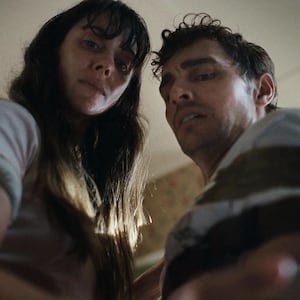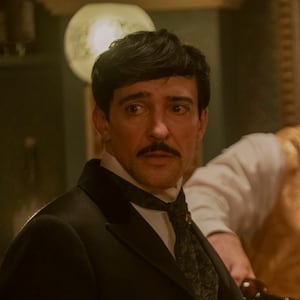We were so scared.
Cowering in fear is anathema to Bronx residents. We’re bred to be tough; why walk when you can swagger?
Son of Sam changed that. Serial killer David Berkowitz, who murdered six people and wounded at least seven, started in his home borough in 1976, before branching out to Brooklyn and Queens. The killings peaked in 1977 and terrorized a broken city, already filled with violence and teetering on bankruptcy.
Berkowitz’s crimes and his motivation are detailed in a three-part documentary series, Conversations with a Killer: The Son of Sam Tapes, on Netflix July 30. (There’s no significant date being commemorated. The closest temporal tie is slight; the series drops the day after the 49th anniversary of his first killing.)
Filmmaker Joe Berlinger created the Conversations with a Killer series, which has also explored the lives of Ted Bundy, John Wayne Gacy, and Jeffrey Dahmer. Berlinger specializes in true-crime films and has done important work, including the Paradise Lost trilogy. In addition to helping free the West Memphis Three, Berlinger’s documentaries have aided four others wrongly accused, saving some from death row.

In no way does Berlinger suggest Berkowitz is innocent. The filmmaker’s intent was to tell the story of Son of Sam, the name the killer used to refer to himself, and show him in the context of his times, when his actions paralyzed a city and ignited a tabloid war.
“Here was another opportunity to tell a story that we–our age–all remember because we lived through it, but the younger generation has only had a passing familiarity with,” says Berlinger, 63. “And yet, if you go on these true-crime boards, even now, you’ll see a lot of people believe that there were multiple Sons of Sam, that it was a cult. And I think that’s an incredibly irresponsible story. One of my goals was to set the record straight.”

This series shares audio recordings from Jack Jones, a former reporter at the Rochester Democrat and Chronicle, who conducted in-depth jailhouse interviews with Berkowitz. Conversations also features interviews with survivors of his attacks and relatives of his victims.
Just enough news footage reminds those who endured fraught days and even worse nights what it felt like. For those too young to remember (and since three-quarters of the world’s population is under 50, that would be most folks), the series offers an accurate reflection of the city in crisis. It shows the NYPD squad cars, blue-and-white Pontiac LeMans that always looked about to fishtail; cops sporting mustaches and sideburns, and young women with hair feathered in Farrah Fawcett-inspired dos (or in my case, a don’t).

It was a proudly outer-borough world that Saturday Night Fever copied, a place where Huk-A-Poo blouses were tight, elephant bells were wide, and platform heels were high. Natural fibers were nonexistent.
Although the young women whom Berkowitz hunted were often out for a night at the disco, in the mid-’70s, venturing out of your home at all required moxie and faith. Violent crime was rampant, neighborhoods were burning, and the city was spiraling economically. The federal government refused to bail it out, as the famous Daily News front page headline blared, "Ford to City: Drop Dead."
Life in the city was already grim, and a maniac with a .44 gun made it so much worse. Women with long, dark hair tucked it under hats—the killer was known to target brunettes.

Besides interviews with those whose lives were shattered, someone identified as an expert on Berkowitz, and veterans of the NYC tabloids who covered the story, there’s a reveal at the end that would be wrong to spoil. And it’s worth watching for this, as it is to gain perspective on a time that seems so distant, yet Berkowitz remains incarcerated.
Some of the documentary’s re-enactments, particularly those of an imprisoned Berkowitz, feel forced. But the crime re-enactments work. This shadowy figure snuck up on young couples parked. He sidled up to their car and shot, point-blank, into the victims. He had no connection to them.
Ultimately, Berkowitz had no connection to anyone, except perhaps Jimmy Breslin. The late great Daily News columnist owned this story, especially once Berkowitz wrote to him. Yes, this was a tragedy, an absolute reign of terror. Parents lost their children; lives were forever ruined. But for the NYC tabs, it was a bare-knuckle brawl as everyone was trying to get the scoop.
Breslin had it. Berlinger shows a clip of other journalists sniffing about whether they would have written a letter to the killer in a newspaper column. Maybe they wouldn’t have, but the killer hadn’t written to them either, as he did to Breslin. A tabloid columnist who understands the pure gold of a scoop like this, albeit acknowledging the inherent tragedy, would, of course, write to him.

This was not just a scoop or a story that those of us living through could not stop talking about. It felt like an epidemic of young women being slaughtered for no reason. The Bronx in particular felt more dangerous than usual, and that is saying something for those times.
I grew up close to where Berkowitz did. Both of our families moved from neighborhoods of the Bronx that were burning to Co-Op City, a massive housing complex of brutalist architecture in the northeastern part of the borough. We attended the same high school; he graduated five years earlier. And he killed first in the neighborhoods he knew best. So, while I didn’t know him or any of the young women slain, I have friends who lost friends.

We were all so scared.
In the summer of 1977, I had finished my freshman year at NYU and was renting a teeny room in an Upper West Side apartment. I went uptown regularly to visit my family in Co-Op. Getting off a bus one muggy evening, I spotted a pal and went to his car to catch up.
Buddha wouldn’t even let me get in, and we had been friends since eighth grade. Instead, he walked me to my building. (Yes, I have a childhood friend nicknamed Buddha even though his real name is Ralphie.) I had shoulder-length dark hair, and the Son of Sam had been targeting couples in parked cars. Just sitting with Buddha would have put us both in danger.
“The entire city was gripped by fear,” Berlinger says. “I felt like you had to understand how common and normal it would be for a couple to be sitting in a car and to be preyed upon.”
The re-enactments help tell this story, Berlinger notes, because “when you get into the mind of this killer, this killer differs from the other killers we’ve profiled in the past. And also that’s part of my fascination. You know, Bundy, Gacy, Dahmer, each in their own way, wanted to be intimate. They enjoyed the act of killing. This guy, he had to be distanced. He had to dehumanize them. And so, just to understand the psychology of that, I thought that understanding how somebody could just come up, go choose random people and just shoot them and run away, just how terrifying that was again.”
And all these years later, even though he’s locked away, some of that terror lingers.









